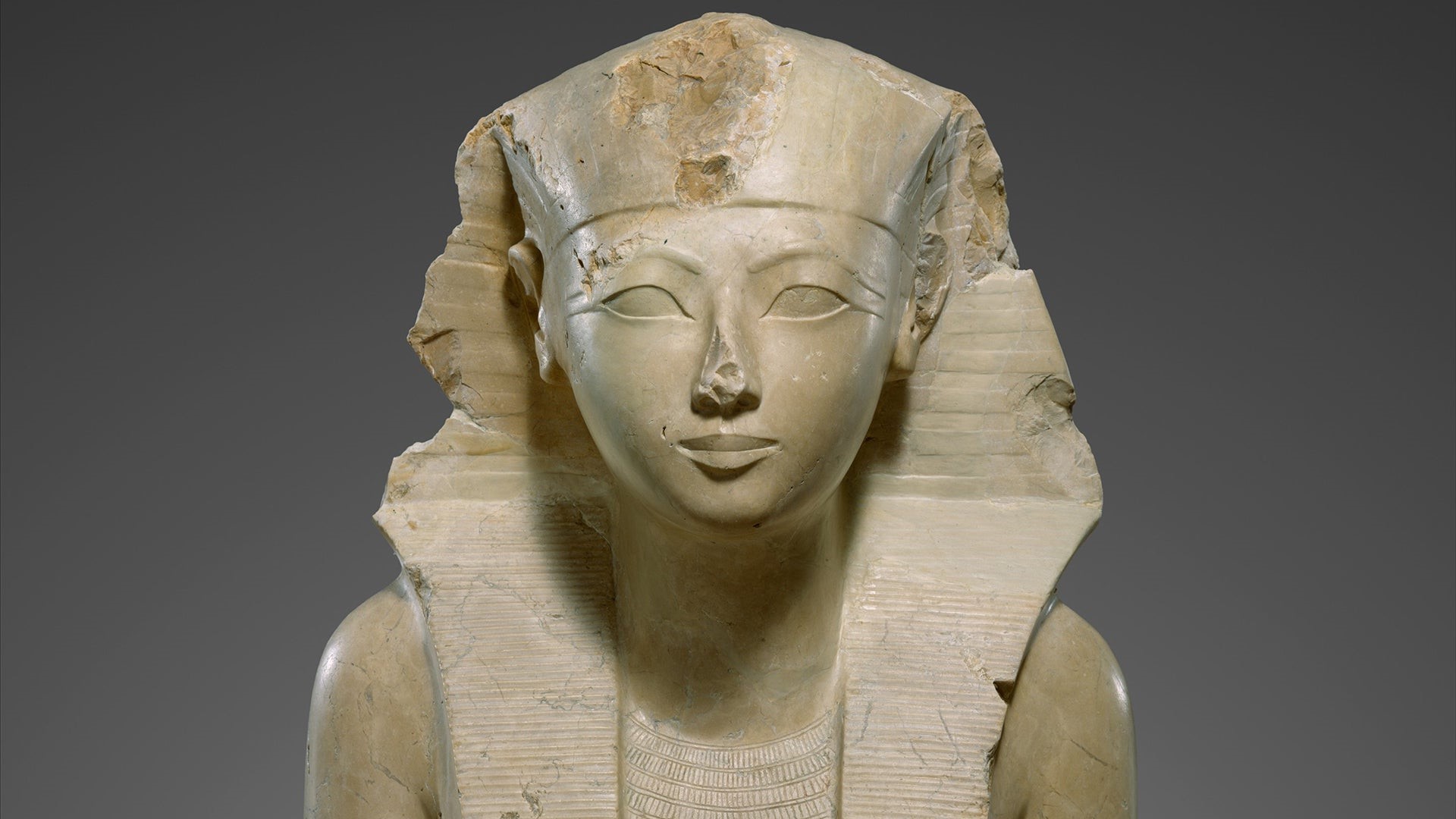
Ever wondered about the power and mystery that shrouds one of ancient Egypt's most intriguing figures? Hatshepsut, a name that echoes through the halls of history, not just as a queen, but as a pharaoh who defied norms and expectations. Why was she so remarkable? Well, for starters, she broke through the glass ceiling of ancient patriarchy to lead Egypt into an era of prosperity and monumental achievements. From her daring rise to power to her ambitious building projects, Hatshepsut's story is nothing short of fascinating. So, buckle up as we embark on a journey back in time to uncover 21 great Hatshepsut fun facts. These tidbits will not only enlighten but also entertain, offering a glimpse into the life of a ruler who was truly ahead of her time. Ready to be amazed by the legacy of this female pharaoh? Let's dive in!
Key Takeaways:
- Hatshepsut, a remarkable female pharaoh, defied gender norms and led ancient Egypt to prosperity through impressive architecture and trade expeditions to the Land of Punt.
- Despite attempts to erase her from history, Hatshepsut's reign challenges traditional narratives about power and gender, inspiring a reevaluation of women's roles in ancient history and teaching us the importance of celebrating women's contributions.
Who Was Hatshepsut?
Hatshepsut, one of ancient Egypt's most intriguing figures, was a female pharaoh who reigned over one of history's greatest civilizations. Her rule, which began around 1478 BC, marked a period of prosperity and monumental architecture. Unlike many of her predecessors and successors, Hatshepsut focused on building Egypt's economy and commissioning impressive construction projects, including her famous mortuary temple at Deir el-Bahri.
- Hatshepsut was not just any pharaoh; she was one of the few women to assume the full powers of the position in ancient Egypt.
Hatshepsut's Rise to Power
-
Her path to power was unconventional. Initially, she served as regent for her stepson, Thutmose III, who was too young to rule. Over time, Hatshepsut transitioned from regent to co-ruler, and eventually, she declared herself pharaoh.
-
This bold move was solidified through strategic depictions of herself in traditional male pharaoh attire, including the false beard, in statues and reliefs. This helped cement her authority in the public eye and within the religious constructs of the time.
Hatshepsut's Architectural Achievements
-
Among her many accomplishments, Hatshepsut is perhaps best known for her architectural innovations. Her mortuary temple at Deir el-Bahri stands as a testament to ancient Egyptian engineering and aesthetic beauty.
-
This temple, nestled against the cliffs of the Theban hills, is one of the architectural wonders of ancient Egypt, blending seamlessly with its natural surroundings.
-
Hatshepsut also initiated trade expeditions to the Land of Punt, which brought back wealth and exotic goods, such as incense and ivory, further enriching Egypt.
Hatshepsut's Legacy
-
Despite her achievements, Hatshepsut's legacy was nearly erased from history. Successors attempted to obliterate her memory by defacing her monuments and removing her name from king lists.
-
However, modern archaeology has uncovered the truth about her reign, revealing her as a pharaoh who was both a warrior and a builder, a ruler who brought prosperity to her people.
-
Hatshepsut's mummy was identified in 2007, providing invaluable insights into her life and reign. This discovery was a significant breakthrough in Egyptology, offering a tangible connection to Egypt's past.
Hatshepsut's Religious Contributions
-
Hatshepsut was deeply religious and made significant contributions to the Egyptian pantheon, including the construction of temples dedicated to the god Amun.
-
Her devotion is evident in the numerous statues and offerings found in these temples, intended to secure divine favor for both her reign and the afterlife.
-
The Festival of the Valley, a significant religious celebration during her reign, highlighted her role as both a political and spiritual leader. This festival reinforced the bond between the living and the dead, an essential aspect of ancient Egyptian culture.
The Mystery of Hatshepsut's Death
-
The exact cause of Hatshepsut's death remains a mystery. Some theories suggest illness, while others propose that she was murdered in a palace coup led by her stepson, Thutmose III.
-
Her tomb, located in the Valley of the Kings, was discovered in the early 20th century, but it was largely empty, leading to speculation about the fate of her mummified body until its identification in 2007.
-
Hatshepsut's death marked the end of one of the most prosperous and peaceful periods in ancient Egyptian history. Her reign is a testament to the power and potential of female leadership in a male-dominated society.
-
Despite the attempts to erase her from history, Hatshepsut remains a symbol of resilience and ingenuity, her story inspiring generations long after her time.
-
Hatshepsut's influence extended beyond her lifetime, with later female rulers often looking to her reign as a model of effective governance and leadership.
-
The rediscovery of her contributions has led to a reevaluation of women's roles in ancient history, highlighting the capabilities and achievements of female leaders in a world often dominated by men.
-
Hatshepsut's reign challenges traditional narratives about power and gender, showing that leadership qualities transcend gender boundaries.
-
Her story, once hidden, now serves as a powerful example of how history can be reshaped and remembered, ensuring that the achievements of those like Hatshepsut are not forgotten.
-
Finally, Hatshepsut's legacy teaches us about the importance of recognizing and celebrating the contributions of women to our shared history, a lesson that remains relevant in today's society.
A Final Nod to Hatshepsut's Legacy
Hatshepsut, a figure of resilience and innovation, reshaped ancient Egypt's landscape with her wisdom and ambition. Her reign, marked by prosperity, architectural marvels, and a bold assertion of female power, continues to inspire. As we reflect on her story, it's clear that Hatshepsut wasn't just a ruler; she was a visionary who broke conventions and paved the way for future generations. Her monuments stand tall, not just as structures of stone, but as enduring symbols of her indomitable spirit. Hatshepsut's journey from queen to Pharaoh is a testament to her unmatched determination and intellect. Her legacy, rich with achievements, challenges us to think beyond the confines of our roles and strive for greatness. Hatshepsut's story, brimming with intrigue and accomplishments, reminds us that history is not just about the past; it's a beacon guiding us toward a brighter future.
Frequently Asked Questions
Was this page helpful?
Our commitment to delivering trustworthy and engaging content is at the heart of what we do. Each fact on our site is contributed by real users like you, bringing a wealth of diverse insights and information. To ensure the highest standards of accuracy and reliability, our dedicated editors meticulously review each submission. This process guarantees that the facts we share are not only fascinating but also credible. Trust in our commitment to quality and authenticity as you explore and learn with us.


